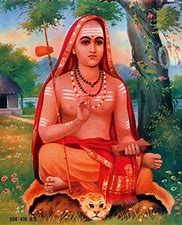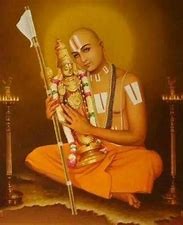CONTENTS
- Adi Shankaracharya
- Sri Ramanujacharya
Adi Shankaracharya Birth Anniversary
Focus: GS I- Ancient History
Why in News?
The Prime Minister has paid tributes to Jagadguru Adi Shankaracharya on his birth anniversary.
Life and Works of Adi Sankaracharya:

Birth and Background
- Adi Sankaracharya was born in Kaladi, Kerala in 788 CE.
Philosophy and Writings
- He propounded the Doctrine of Advaita (Monism).
- He wrote many commentaries on the Vedic canon (Upanishads, Brahma Sutras and Bhagavad Gita) in Sanskrit.
- His major work is Brahmasutrabhasya (Bhashya or commentary on the Brahma Sutra).
Travels and Contributions
- He travelled the length and breadth of India spreading Advaita Vedanta.
- He was responsible for reviving Hinduism in India to a great extent when Buddhism was gaining popularity.
- He was a devotee of Shiva.
- He criticised the Mimamsa School of philosophy and explained a major point of deviance between Hinduism and Buddhism.
Legacy
- Shankaracharya established four Mathas in the four corners of India and the tradition continues to this day.
- He preached renunciation and adoption of the knowledge path to realize Brahman.
What is Advaita Vedanta?
- Advaita Vedanta articulates a philosophical position of radical nondualism, a revisionary worldview which it derives from the ancient Upanishadic texts.
- According to Advaita Vedantins, the Upanishads reveal a fundamental principle of nonduality termed ‘brahman’, which is the reality of all things.
- The basic theme of Advaita is that the one unchanging entity (Brahman) alone is real while changing entities do not have absolute existence. The world is Maya or illusion and only the Self is real. A person who realises this attains moksha (liberation of the soul).
- The doctrine says that there is no difference between the Atman and the Brahman. The individual soul is not different from Brahman. Hence, its name Advaita meaning non-duality.
Sri Ramanujacharya Jayanti
Focus: GS I- History
Why in News?
The Prime Minister has paid tributes to Sri Ramanujacharya on his Jayanti.

About Ramanuja (c. 1017 – 1137 CE)
- Ramanuja, reformer and Vaishnavite saint was born at Sriperumbudur near modern Chennai.
- He preached Vishista Advaitavada (qualified monism).
- His philosophical foundations for devotionalism were influential to the Bhakti movement.
- According to him, God is Saguna Brahman (with attributes) and the creative process including all the objects in creation are real and not illusory as was held by Shankaracharya. Therefore, according to Ramanuja, God, soul, and matter are real. However, God is the inner substance and the rest are his attributes.
- In Vishista Advaitavada, the universe and Brahman are considered two equally real entities, as in dualism, but here the universe is not separate from Brahman but is formed out of Brahman. The Brahman is considered as a personal god with omniscient qualities who has created the world out of his own self. Thus, the world bears to Brahman the relation of the part to the whole, or the relation of a ‘qualified effect’ to the base (hence qualified monism).
- The difference between Dualism and Vishista Advaita is that “mankind enjoys higher status than in pure dualistic worship and is nearer to God”. In Vishista Advaita, both the world and Brahman are considered equally real; they are not considered to be two separate entities as in Dualism.
- Ramanuja advocated prabattimarga or the path of self-surrender to God. He invited downtrodden people to Vaishnavism and advocated salvation by Bhakti.
Important writings include:
- Vedarthasangraha (literally, “Summary of the Vedas meaning”),
- Sri Bhashya (a review and commentary on the Brahma Sutras),
- Bhagavad Gita Bhashya (a review and commentary on the Bhagavad Gita), and
- The minor works titled Vedantapida, Vedantasara, Gadya Trayam (which is a compilation of three texts called the Saranagati Gadyam, Sriranga Gadyam and the Srivaikunta Gadyam), and Nitya Grantham.
Bhakti Movement
- Bhakti movement took place in Tamil Nadu between the seventh and ninth centuries.
- Bhakti saints looked upon religion as love between the worshipped and worshipper.
- Bhakti was reflected in the emotional poems of the Nayanars (devotees of Shiva) and Alvars (devotees of Vishnu).
- A more effective method for spreading the Bhakti ideology was the use of local languages. The Bhakti saints composed their verses in local languages.
- They also translated Sanskrit works to make them understandable to a wider audience.
- Examples include Kabir, Surdas , Tulsidas, Shankaradeva, Chaitanya Mirabai.





